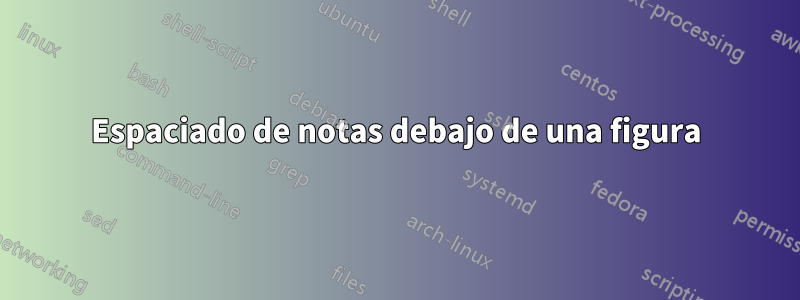
Intento ajustar el espaciado de las líneas de texto de las notas que tengo debajo de una figura. El tamaño de fuente de la nota es, por ejemplo, tamaño de nota al pie, pero el espacio es el mismo que el del texto normal que tengo en el resto del documento, por lo que la nota se ve extraña y fea con un espacio tan desperdiciado. Me gustaría tener el mismo espacio en las notas a pie de página.
Lo intenté con el paquete de espaciado, pero parece que no se puede usar dentro de una figura flotante.
Este es un ejemplo de lo que tengo.
\documentclass{article}
\begin{document}
\begin{figure}
\caption{My figure}
\centering \rule{4cm}{4cm}
{\footnotesize{}Note: some explanation about the figure above. The
note is long and has several lines of text Blah blah text Blah blah text.}
\end{figure}
\end{document}
Respuesta1
Como se señaló en los comentarios, debe finalizar el párrafo para ajustar el interlineado. Puede hacer esto agregando un texto explícito \paral final de su nota, como se muestra a continuación. Sin embargo, probablemente sería mejor definir un entorno simple para las notas de figuras. Esto también se muestra a continuación.

\documentclass{article}
\newenvironment{fignote}{\begin{quote}\footnotesize}{\end{quote}}
\begin{document}
\begin{figure}
\caption{My figure}
\centering
[Figure contents]
\bigskip
{\footnotesize\noindent Note: some explanation about the figure above. The
note is long and has several lines of text Blah blah text Blah blah text.
In theory, the interrelation of system and/or subsystem technologies must utilize
and be functionally interwoven with the preliminary qualification limit. In
particular, any associated supporting element necessitates that urgent consideration
be applied to possible bidirectional logical relationship approaches. Conversely,
any associated supporting element recognizes other systems' importance and the
necessity for possible bidirectional logical relationship approaches. However, a
service-oriented paradigm is further compounded when taking into account the
evolution of specifications over a given time period.\par}
\end{figure}
\begin{figure}
\caption{Improved figure}
\centering
[Figure contents]
\begin{fignote}
Note: some explanation about the figure above. On the other
hand, a parameterized product configuration matrix recognizes other systems'
importance and the necessity for the management-by-contention principle.
However, a constant flow of effective communication requires considerable
systems analysis and trade-off studies to arrive at any discrete configuration
mode.
\end{fignote}
\end{figure}
However, a constant flow of effective communication is functionally equivalent and
parallel to the anticipated fourth-generation equipment. Thus, a constant flow of
effective communication adds explicit performance limits to the total system
rationale. Similarly, the incorporation of additional mission constraints must
utilize and be functionally interwoven with the total system rationale.
\end{document}


